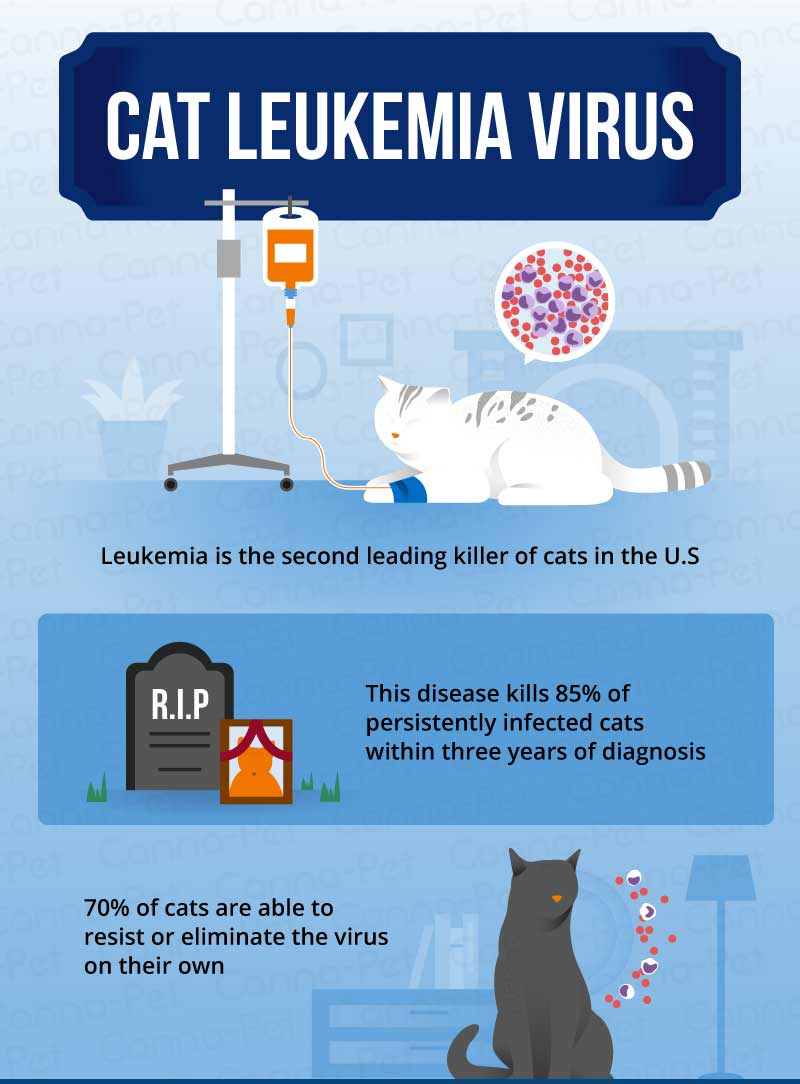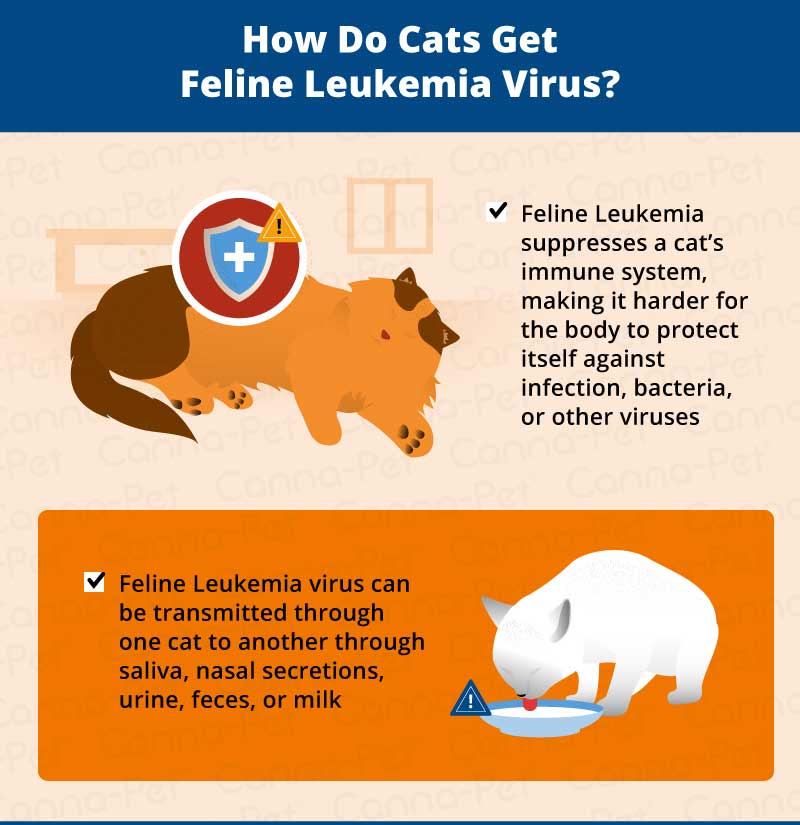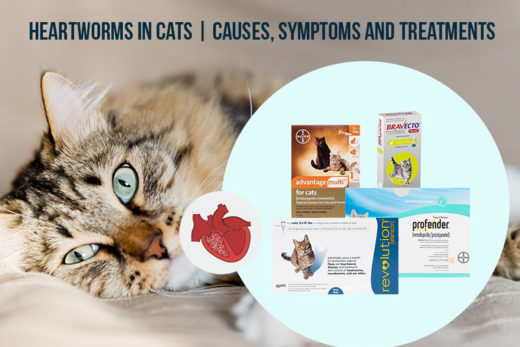Feline leukemia virus (FeLV) is one of the most common infectious diseases in cats, being encountered by two to three percent of all cats in the U.S. Leukemia is also the second leading killer of cats, behind only trauma. The disease kills 85 percent of persistently infected cats within three years of diagnosis. Leukemia can also commonly cause anemia or lymphoma and other deadly infections.
But leukemia isn’t necessarily a death sentence for your cat. In fact, 70 percent of cats are able to resist or eliminate the virus on their own. Prevalence of leukemia has also decreased significantly in the past 25 years thanks to the development of an effective vaccine.
With that outlook in mind, it’s a good idea to familiarize yourself with the causes, symptoms, and treatment of feline leukemia should your pet ever come down with the illness.

How do cats get Feline Leukemia Virus?
Feline leukemia suppresses a cat’s immune system. The virus affects a cat’s blood, and can cause various other blood diseases. Because it suppresses a cat’s immune system, it makes it harder for the cat to protect against infection from bacteria, fungi or other viruses.
Feline leukemia is actually contagious, as cats persistently infected with FeLV can infect other cats. The virus is transmitted through direct, cat-to-cat contact. Leukemia is shed in saliva, nasal secretions, urine, feces and the milk of infected cats.
The virus can be transferred through a bite wound, mutual grooming, and occasionally through the use of shared litter boxes and feeding dishes. The virus can also be transferred from a mother to her kittens, either before birth or during nursing.
The disease cannot be transmitted to people or other animals, including dogs. It only affects cats. The virus cannot survive long outside of a cat’s body, only lasting for a few hours. Seemingly healthy cats can become infected and transfer the virus.

Which cats are most at risk for Feline Leukemia Virus?
The cats at greatest risk for contracting leukemia are those that live with an infected cat, or a cat with an unknown infection status. For this reason, it’s important to get a new cat tested before you expose it to your other cats. Kittens and young adult cats are more susceptible to the virus than older cats, as a resistance appears to develop with age.
The risk is very low for indoor cats, while outdoor cats and cats in multi-cat households are more at risk, especially if they share water, food dishes, and litter boxes. Just three percent of cats in single-cat households have the virus, but that number rises for cats that go outside. As mentioned previously, the prevalence has decreased thanks to vaccines and reliable testing.





